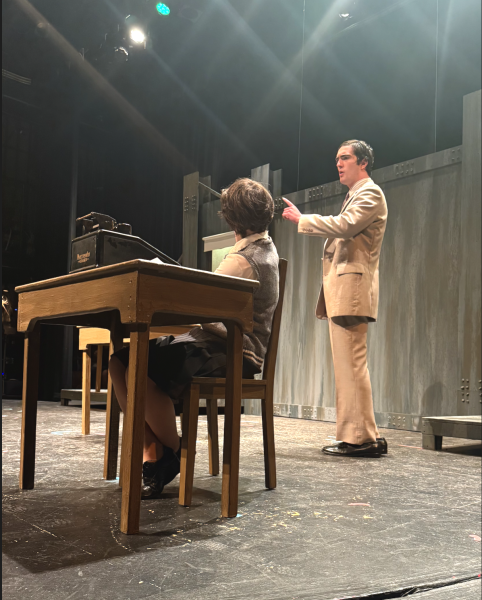Classroom Tech at Latin – Where Do We Stand?
February 17, 2018
Like it or not, modern technology has taken over every aspect of our daily lives. Each day, the ways we do everyday activities like driving a car, or ordering food, or even waking up in the morning get more and more advanced.
In a mere five to ten years, smart, self-driving cars and trucks are expected to start hitting the roads, a concept described by the MIT Technology Review as having “far-reaching societal implications, from environmental benefits to improved safety.”
While our lives as students are affected constantly by these innovations, one sector of technology is especially important to us and our futures: technology in the classroom. Latin is very tech-conscious, and does not try to ignore the benefits of utilizing electronics to further its students’ quality of education. Each student is equipped with a laptop of some sort, the vast majority owning Macbooks. With these, essay writing and taking notes is easier for some.
Should laptops not suffice, there’s also the ‘pub’ – a room on the fourth floor lined with several widescreen desktop computers, perfect for graphic design and other visually-centered projects.
Similarly, across the bridge in the Middle School, we have what’s called the ‘Maker Space,’ a classroom dedicated to high tech projects, often revolving around computer science and the like. A 3D printer and a green screen are also in the room as useful tools for all kinds of projects.
Latin’s Science Center is another high-tech learning space, boasting several versatile labs for conducting experiments, whether in Chemistry class or for the robotics team.
By far our most prevalent and widespread use of tech, however, is the abundance of SMART Boards. Almost every classroom is equipped with the machines, which work as a cross between a whiteboard, projector, and a computer.
So where are we in comparison to similar independent schools? Are we ahead of the curve, or do we have catching up to do?
As Andrew Stone, the technology coordinator at the Middle School, and a significant figure in the acquisition of new tech, said, “Generally, I would say our level of technological implementation is more or less on par with schools we consider our peers. Rather than being overly prescriptive, we believe individuals should be allowed to decide what technology they use and how they use it.”
This freedom to use technology at our own liberty is evident in our use of laptops – we can, to some extent, utilize these tools in whatever way is helpful to us and our education.
Mr. Stone went further to say that “we try to provide a good assortment of tools, make sure our teachers and students are familiar and comfortable with those options, and offer whatever support is necessary to make the most of those resources.”
The implementation of all this technology serves only to benefit us, with few to no drawbacks – right? Well, there is an argument to reduce the use of screens and other tech in schools, that, while not as prominent as the pro-tech side, is still important to consider.
In one article, The Washington Post remarked that “technology has become a catalyst for distraction and off task behavior with students,” and that using devices when students are supposed to be listening to the teacher or doing classwork “promotes a lack of focus.”
Even Apple CEO Tim Cook said that he “doesn’t believe in the overuse [of technology],” and when asked about tech in schools, said, “In a course on literature, do I think you should use technology a lot? Probably not.”
Even after taking all this into consideration, though, I still believe technology does a lot more help than harm in the classroom environment, as long as it isn’t used excessively. It’s important that, as a school, we continue to evolve technologically and it seems that, at the present moment, we are doing this pretty well.
With our arsenal of current tech, we will be better equipped for the remainder of the 21st century and beyond.





















































